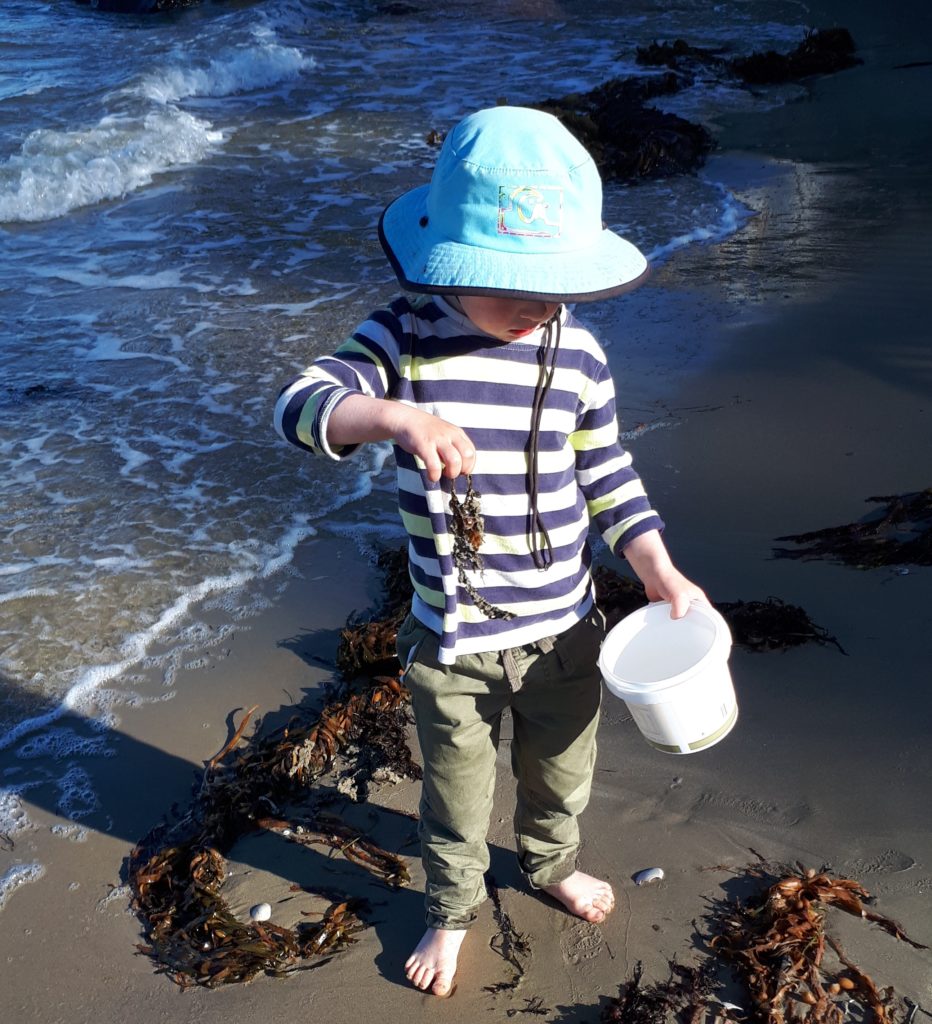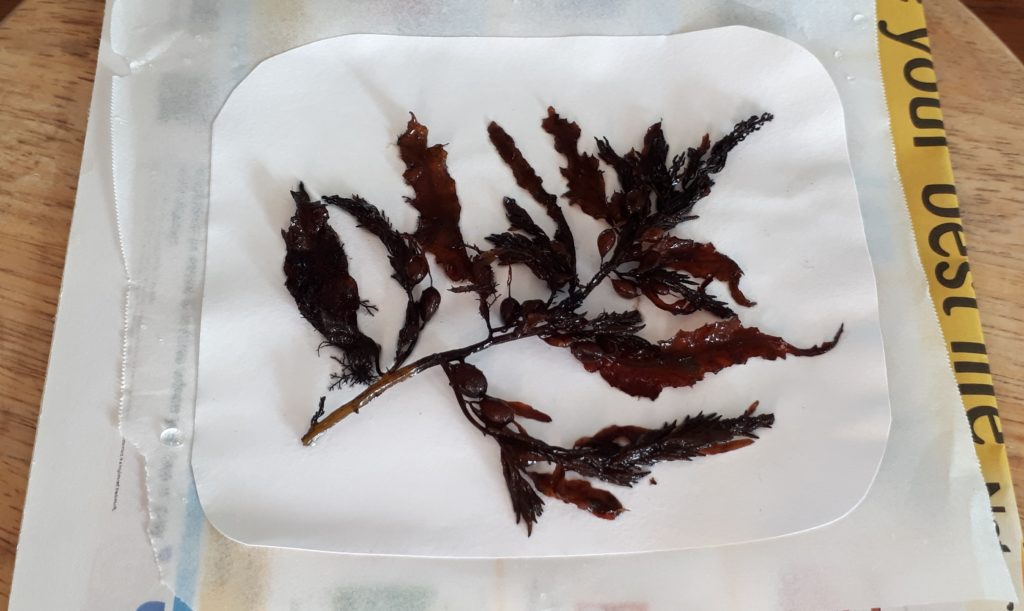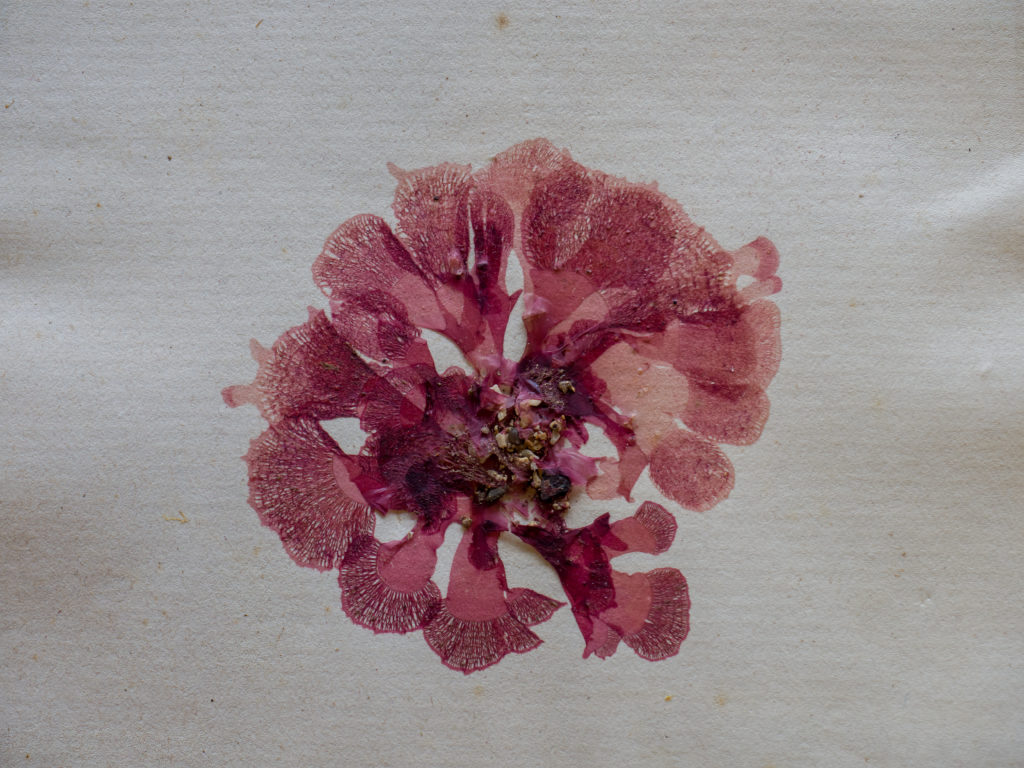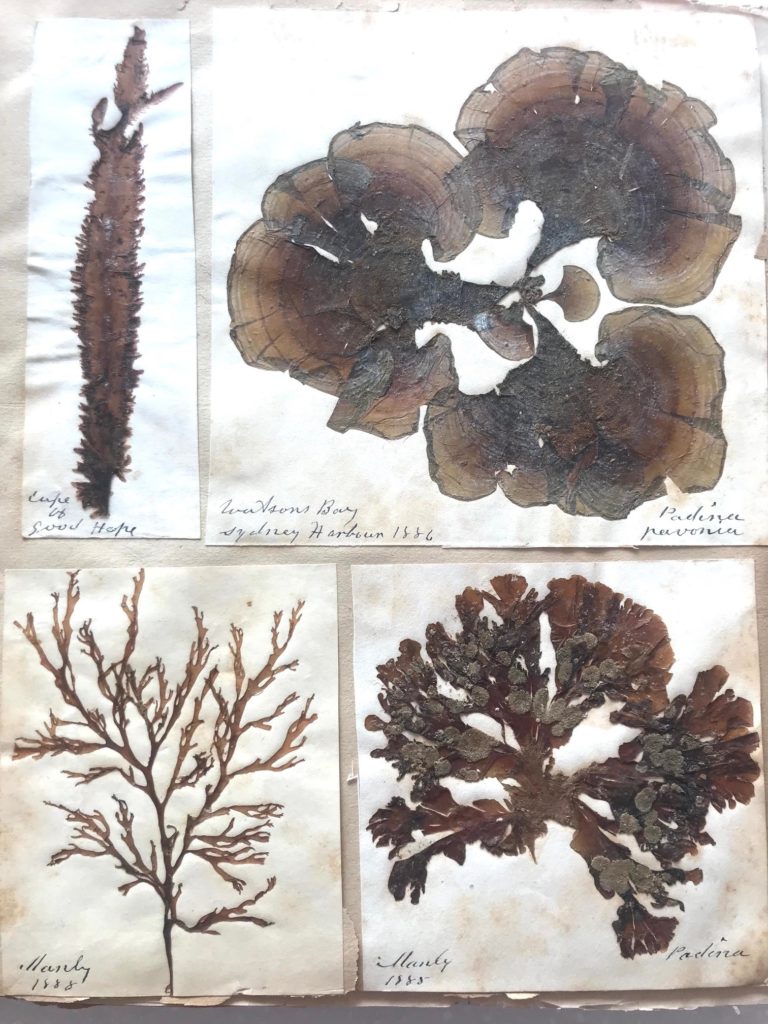Seaweed pressing is a way of preserving seaweed specimens for art or research. Living in Australia, a biodiversity hotspot for seaweed, you’ll have plenty to choose from. There are thousands of different species, including forests of giant kelp and Neptune’s necklace, which grows in rockpools and looks like grapes threaded on a string.
Seaweed matters
Dr Anusuya Willis, a researcher at our Australian National Algae Culture Collection, said, while it’s not the best thing to find tangled around your leg while swimming, seaweed is vital in the environment.
“Seaweed provide habitat and food for marine animals and nurseries for fish such as seahorses. They protect reefs from wave action, soak up nutrients and carbon and produce oxygen,” Anusuya said.
Seaweed is also known as macroalgae. There are three main types: red, green and brown.
“Like plants, seaweed use chloroplasts for photosynthesis. In addition, they have a variety of light harvesting pigments that give them their different colours. Green seaweed live near the surface of the ocean. Brown seaweed, which include kelp, live a little deeper. Red seaweed, which can harvest blue light, grow deeper still,” she said.
You can collect all three kinds washed up on beaches.
“Red or green seaweed are the best kinds to press. Brown seaweed is sometimes too thick. Red seaweed are very diverse, with frilly leaves that keep their colour when pressed,” Anusuya said.
“Seaweed washed up on the beach has already been detached by waves or storms. As a result, collecting small amounts of seaweed from the beach won’t harm the environment. But remember not to collect seaweed from rock pools or where collecting is not permitted.”

Anusuya’s son Jasper collecting seaweed at a beach in Hobart.
A step-by-step guide to seaweed pressing
You will need:
- A bucket or a container with a lid
- Scissors
- Fresh water
- A towel
- Watercolour paper (300 gsm weight) or other thick paper
- Two chopping boards
- Two pieces of baking paper (make sure the chopping boards and pieces of baking paper are larger than the piece of watercolour paper)
- Some newspaper (or cardboard)
- Some books to use as weights
Here’s what you do:
Your press will be like a sandwich with the seaweed in the middle. The order of the layers is: chopping board, newspaper, baking paper, watercolour paper, seaweed, baking paper, newspaper, chopping board, books.
- Firstly, find some fresh (not smelly) seaweed lying on the beach. Search for different colours, including red, green and brown.
- Cut off some small, nice-looking pieces and take them home in a bucket of seawater.
- At home, rinse your seaweed pieces in fresh water and lie them on a towel to dry slightly.
- Soak a piece of watercolour paper in fresh water for a few seconds and shake off the excess water.
- Layer a chopping board, newspaper, baking paper and the wet watercolour paper.
- Arrange your seaweed pieces on the wet watercolour paper to form a picture. (As they dry, the seaweed pieces will stick to the watercolour paper. You won’t be able to move them later.)
- Layer another piece of baking paper, newspaper and another chopping board. Place books on top as weights.
- Leave to dry for two or three days. If still damp, replace the wet newspaper with dry newspaper and continue drying and pressing.
- Remove from the watercolour paper with pressed seaweed and allow to air dry for a few more days.
- Display your pressed seaweed in a frame or an art book, or cut it up to make Christmas cards.
Safety tip: Don’t handle seaweed if there are blooms of harmful cyanobacteria at the beach or other dangers present.

One of Jasper’s seaweeds arranged on watercolour paper to press.
A history of seaweed collecting
No matter whether you are a scientist studying seaweed or a child making art, seaweed pressing uses much the same technique.

A specimen of the seaweed Martensia denticulata from 1927 in the cryptogam collection of the Australian National Herbarium.
Seaweed specimens for research are stored in herbaria, which are scientific collections of plants, together with data that includes their species identification and when and where they were collected. Recently, our Australian National Algae Culture Collection, which has formerly focused on microalgae, began to culture living collections of seaweed due to expanding research into their many different uses.
Seaweed pressing was also a popular hobby in the past.
Artist Julie Ryder has been studying seaweed albums since 2016, when she was an artist-in-residence at the National Museum of Australia in Canberra. There, she came across a beautiful album of seaweed pressings made by a mystery collector. Through careful sleuthing, Julie was able to attribute the album to an early citizen scientist named Charles Morrison.
“Charles’s family think he might have been a painter or interior decorator. Seaweed pressing was his hobby,” Julie said.
“The specimens in Charles’s albums date back to the 1840s. He collected first in Ireland, then at the Cape of Good Hope in 1854 while travelling to Australia. He then collected in Australia, mainly around Port Phillip Bay, until his death in 1911,” she said.
Julie has now unearthed 15 seaweed albums by Charles Morrison, the most recent at an auction in Melbourne earlier this year. The album was purchased by Charles’s family and is currently on loan to Julie. She is creating a database of each seaweed pressing from Charles’s albums. It includes the species names and when and where they were collected.
As well as being beautiful works of art, Charles’s seaweed pressings have become an important record of seaweed biodiversity. Maybe yours will too.

Seaweed pressings dating from the 1880s in an album by Charles Morrison, unearthed earlier this year by artist Julie Ryder.


19th January 2022 at 8:16 am
Don’t do this at Woolgoolga. Some Ranger may charge you with taking the seaweed!
18th January 2022 at 10:28 am
This is great! Thankyou! We will definitely be doing this next time we’re at the beach.
12th December 2021 at 2:46 pm
Thank you. I live close to the water at Altona and have been wanting to do this for some time.